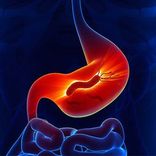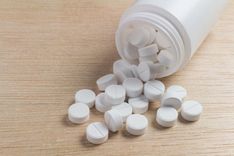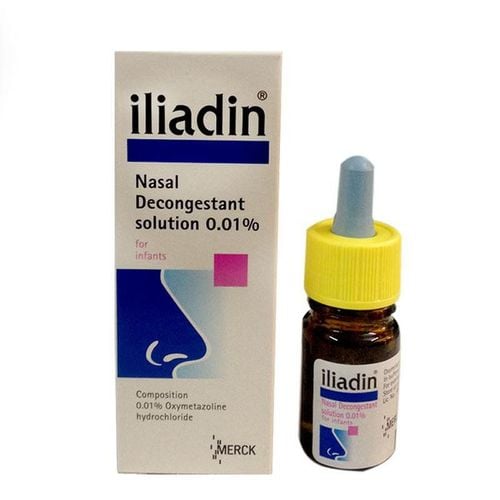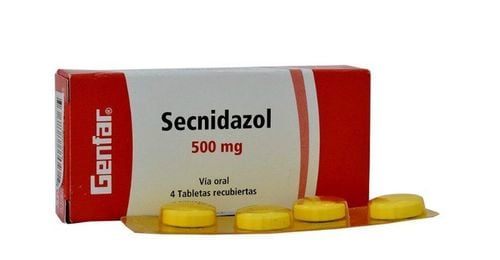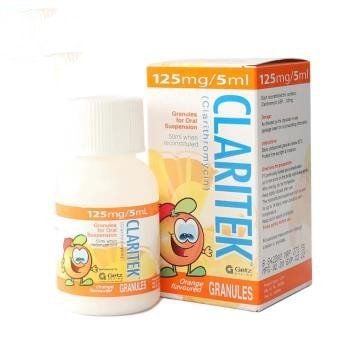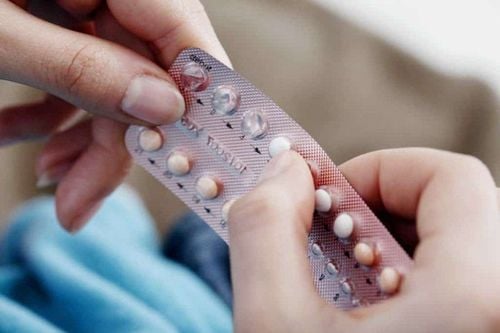Currently, there are many articles on the market related to the drug Rapiclav-1g, but they are still incomplete. The following article provides information about the uses, dosage, and precautions when using Rapiclav-1g.
1. What is Rapiclav?
Rapiclav - 1g belongs to the group of drugs used to treat parasites, bacterial infections, viral infections, and fungal infections.
The drug is formulated as film-coated tablets, with each tablet containing the main ingredients of 875mg of Amoxicillin in the form of Amoxicillin trihydrate and 125mg of Clavulanic acid in the form of Potassium clavulanate. Additionally, it contains other excipients such as Colloidal Silicon Dioxide, Sodium Croscarmellose, Microcrystalline Cellulose, Magnesium Stearate, Hydroxypropylmethyl cellulose, Dibutyl Phthalate, Purified Talc, and Titanium Dioxide.
2. Indications for Rapiclav
Rapiclav is used to treat infections caused by susceptible strains of certain microorganisms in the following cases:
- Lower respiratory tract infections: caused by beta-lactamase-producing strains of Haemophilus influenzae and Moraxella catarrhalis.
- Otitis media: caused by beta-lactamase-producing strains of Haemophilus influenzae and Moraxella catarrhalis.
- Sinusitis: caused by beta-lactamase-producing strains of Haemophilus influenzae and Moraxella catarrhalis.
- Skin and skin structure infections: caused by beta-lactamase-producing strains of Staphylococcus aureus, Escherichia coli, and Klebsiella spp.
- Urinary tract infections: caused by beta-lactamase-producing strains of Escherichia coli, Enterobacter spp., and Klebsiella spp.
3. Dosage - How to Use Rapiclav
Rapiclav is indicated for oral use and should be taken at times other than meals. To reduce the risk of gastrointestinal intolerance, patients should take it at the start of a meal. Follow the doctor's prescription and do not use it for more than 14 days without re-evaluation.
The specific dosage will depend on the individual and their condition.
Adults: The usual dose is 1 Rapiclav 625mg tablet every 12 hours or 1 Rapiclav 375mg tablet every 8 hours.
Patients with severe infections and respiratory infections: 1 Rapiclav 1g tablet every 12 hours or 1 Rapiclav 625mg tablet every 8 hours.
Children: 1 Rapiclav 375mg, Rapiclav 625mg, or Rapiclav 375mg tablet for children weighing 40kg or more, following the recommended adult dosage.
Patients with liver or kidney impairment: The dosage should be reduced.
4. Contraindications for Rapiclav 1g
Rapiclav 1g should not be used in patients who:
Have a history of allergy to Penicillin or any component of the drug.
Have cross-allergies with Cephalosporins.
Have infectious mononucleosis or lymphocytic leukemia.
Have a history of jaundice due to bile or abnormal liver function.
5. Drug Interactions with Rapiclav
When Rapiclav is used in combination with certain drugs, the following interactions may occur:
Alcohol, narcotics, and barbiturates may increase the likelihood of orthostatic hypotension.
Antidiabetic drugs may require dosage adjustments.
Antihypertensive drugs used with Rapiclav may enhance their effects or increase their efficacy.
Cholestyramine and colestipol resins: The absorption of hydrochlorothiazide is reduced in the presence of anion exchange resins. Single doses of cholestyramine or colestipol resins bind to hydrochlorothiazide and reduce its gastrointestinal absorption.
Corticosteroids and ACTH increase electrolyte excretion, particularly hypokalemia.
Pressor amines like norepinephrine may have a reduced response to pressor amines but do not completely eliminate their effects.
Nonsteroidal anti-inflammatory drugs (NSAIDs).
Lithium: When used with Rapiclav, it may reduce the renal clearance of lithium and increase its toxicity.
Allopurinol.
Probenecid.
Anticoagulants.
Hormonal contraceptives.
6. What Side Effects Does Rapiclav Cause?
The side effects that may occur during the use of Rapiclav have been specifically reported as follows:
Digestive disorders: Diarrhea, nausea, indigestion, gastritis, stomatitis, glossitis, oily skin candida infection, enteritis, hemorrhagic colitis, pseudomembranous colitis.
Hypersensitivity reactions: Skin rash, urticaria, itching, angioedema, severe skin reactions, erythema multiforme.
Acute generalized exanthematous pustulosis.
Dermatitis.
Arthritis, joint pain, myositis, fever.
Interstitial nephritis, hematuria.
Blood and lymphatic system: Anemia, hemolytic anemia, thrombocytopenia, thrombocytopenic purpura, eosinophilia, leukopenia, agranulocytosis during penicillin treatment.
Central nervous system: Confusion, anxiety, behavioral changes, delirium, seizures, dizziness, vertigo, insomnia, hyperactivity.
Teeth discoloration to yellow-brown or gray.
7. Precautions When Using Rapiclav for Treatment
Currently, there are no reports on the effects of Rapiclav on the ability to drive and operate machinery.
There is insufficient data from studies and drug control on pregnant women. Therefore, the drug should only be used during pregnancy if absolutely necessary.
Ampicillin-type antibiotics are excreted in breast milk, so the combination of Amoxicillin and Clavulanate potassium should be used with caution in breastfeeding women.
When using Rapiclav for children weighing over 40 kg, the recommended adult dosage can be used.
Elderly patients: The drug is primarily excreted through the kidneys and may pose a risk to patients with impaired renal function. Therefore, close monitoring and supervision of kidney function are necessary.
Use the drug with caution in patients with allergies, asthma, urticaria, or allergic rhinitis.
Hopefully, the information shared above provides patients with useful knowledge about Rapiclav. Patients should not self-medicate at home to avoid unwanted side effects or drug interactions.
Please dial HOTLINE for more information or register for an appointment HERE. Download MyVinmec app to make appointments faster and to manage your bookings easily.

